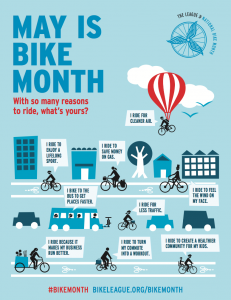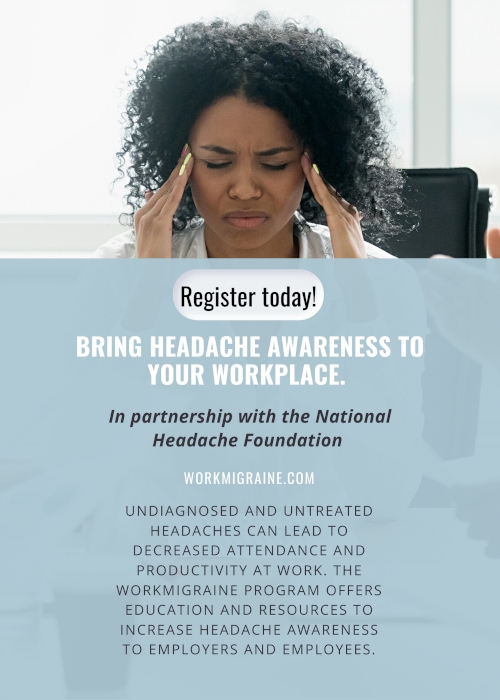How to Boost Your Immunity Naturally
Wednesday, June 30th, 2021
The past year and a half has made us all increasingly aware of our immunity. Some immune systems may be a little weaker after remaining in isolation for so long. There is a very simple and fun way to boost your immunity naturally. All it requires is stepping outside into the sunshine! The benefits of the outdoors are innumerable. Let’s explore just some of the benefits to your well-being both physically and mentally by being outside.
Boost Your Mood

One of the best and most obvious benefits of being out in the sun is vitamin D. Vitamin D is a great defense against illnesses including Covid-19. You can get vitamin D from a supplement, but its most potent source is from the sun itself.
Vitamin D is also a great, natural mood booster! Seasonal depression comes from a lack of vitamin D during the colder months when we may spend more time indoors. So if you ever feel a little out of sorts, go for a stroll in the sunshine or even just sit in the sun.
Not only is vitamin D from the sun a great benefit of being outdoors, so is the fresh air! Oxygen is our literal life force and it is most plentiful in nature. Witnessing the beauty of nature has a calming, peaceful effect. Taking in the sights and sounds of the world around us can remind us of a purpose bigger than ourselves.
Make Your Heart Healthy
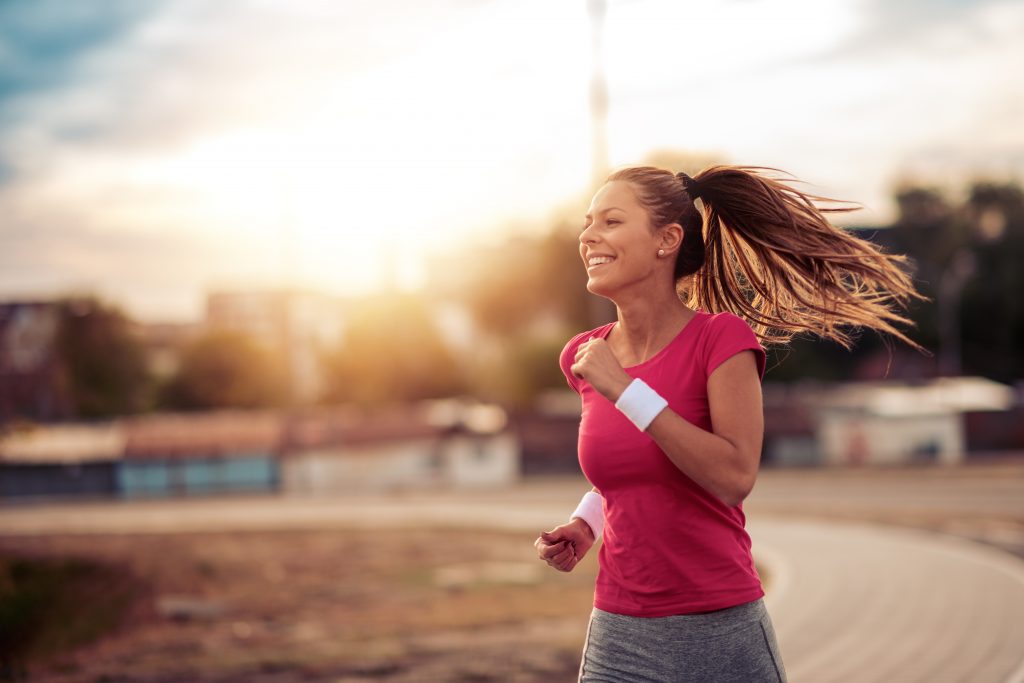
Another benefit to being outdoors is getting active! When you move your body, you increase blood flow to your heart. The heart is a large muscle. When we increase our heart rate through exercise, we are increasing the strength of that muscle.
Cardiovascular disease runs rampant throughout our nation. Simply going for a walk, playing a recreational sport, swimming or any light exercise can do wonders to decrease your risk of heart disease.
Exercise also releases lots of good endorphins, further contributing to our well-being. Endorphins block pain receptors and help decrease anxiety and depression. The more regularly you exercise, the better you will feel.
Build Community

Now that many restrictions have been lifted, it’s important to cultivate community. Getting outside allows you to meet the people around you, build relationships and find ways to serve your community.
From waving hello to a neighbor, playing a team sport, or attending an outdoor event, all of these activities contribute to a healthy, happy individual. We were made to be in community. We thrive when we lean on one another for support and comradery.
Being around other people outdoors is still a safer way to congregate in groups as well. Some exchange of “germs” between people is important to build up our immune systems. In small amounts, those germs train our bodies to fight and build antibodies to guard against disease.
A Break from Screen Time
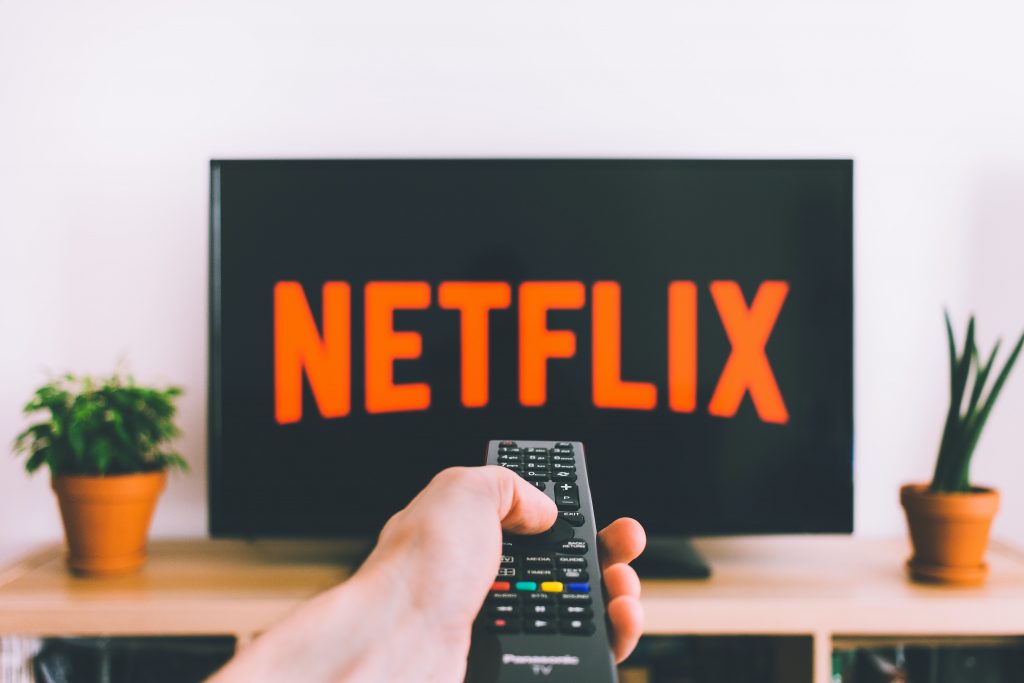
Constant streaming, scrolling, and virtual meetings have us glued to our screens for many hours each day. It’s important for the health of our eyes and our minds to cut it off once in a while. Give your brain a break and clear your mind with some time spent outside.
We spend so much time watching others live life on a screen, we sometimes forget to live it ourselves. There’s plenty of adventure and experiences for you, right outside your door.
Stay Safe in the Sun
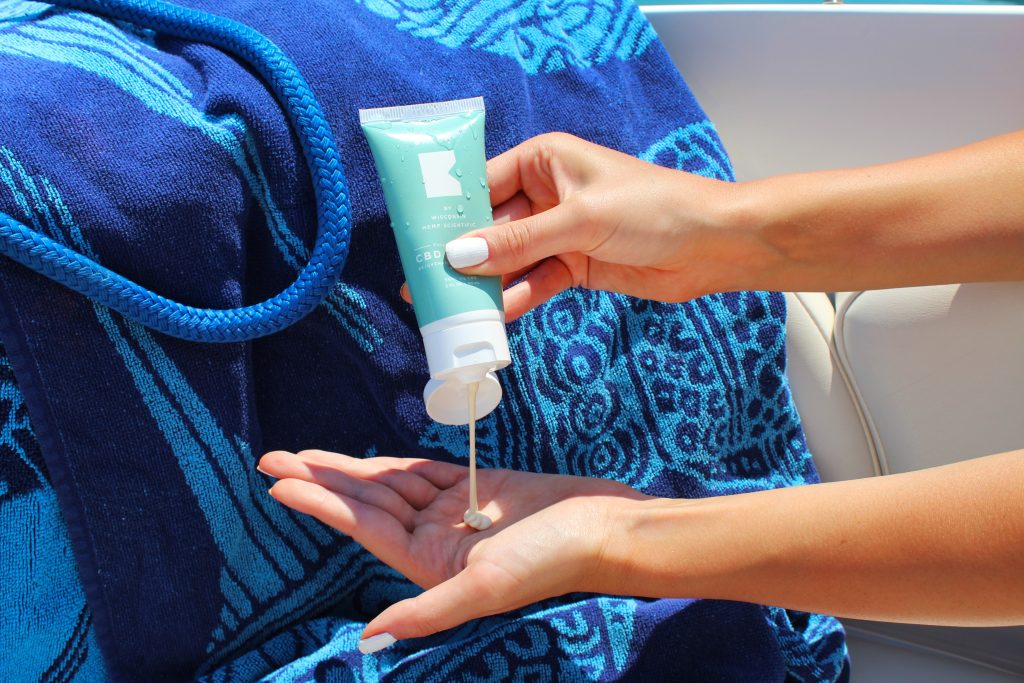
With extra time outside, it’s important to keep in mind some safety precautions. Remember to use sun protection, especially when the sun’s rays are most intense. From about 10 am until 4 pm, the sun is high in the sky and our skin is most likely to suffer damage if left unprotected.
Wear a hat and use a minimum 30 SPF sunscreen when you’ll be exposed to the sun for longer than 10 minutes. As the temperature outside increases, be sure to stay well hydrated. Keep a bottle of water handy at all times.
Make it a goal to get outside for at least an hour each day! It will greatly improve your mood and your overall health.
How to Bring Health Fairs Back to the Workplace
Wednesday, June 2nd, 2021
The past year and a half have been full of uncertainty about our health as a society. Ironically, it also caused us to put a hold on the promotion and education of health in the workplace. Like so many other businesses, we had to get creative to stay afloat! We created a personalized virtual health fair option. Our mission to bring health to the workplace slowed, but it never stopped.
As people become more comfortable with the world post-pandemic, there’s a growing awareness of the importance of our overall health. Now is the time to get back to in-person health fairs. Let us help you find the value in moving beyond the virtual world and coming back together to bring health to your workplace.
Boost Morale
It’s been a difficult time for everyone. Lives were turned upside down, some lost jobs; others lost loved ones. Mental health issues are at an all-time high, and fear has run rampant throughout our nation. What we all need now is a sense of normalcy.

Bringing people back together for an in-person health fair provides many opportunities to improve mental health and morale. Interacting with others in a controlled health fair setting boosts confidence in the safety of the workplace.
Giving health vendors a place to fully showcase their products and services helps boost the economy. As we interact at a health fair, we build connections and education in a way that cannot be achieved in the virtual world.
Encourage Wellness
Now more than ever, individuals are focused on their health. We are hyper-aware of its importance. When we bring in-person health fairs back to the workplace, we communicate how important health is. We also give people the tools to care for their health.
There is no better way to promote wellness and a healthy immunity than with person-to-person interaction. There is an accountability to in-person relationships that can be more easily ignored when we are sequestered away from one another.
As we once again promote health and wellness in our workplaces, we also contribute to lessening the spread of every disease. It has to begin at an individual level. As we encourage that personal responsibility, we make the world a safer, healthier place.
Safety Precautions
While many mask mandates have been lifted, some employees may still feel most comfortable wearing a mask. Having things like hand sanitizer and masks available for use are a great way to set employees at ease.
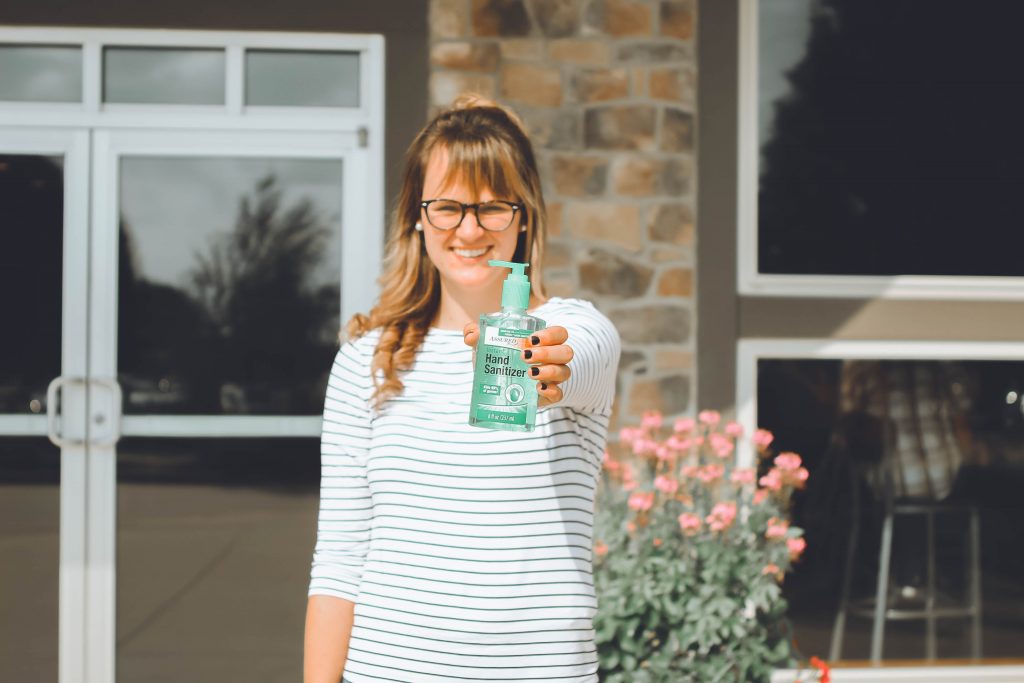
Be sure the facility you are using for your health fair has plenty of open space. Consider hosting your event outside. For your indoor event, provide specific time slots for groups of employees to attend. This can decrease the total number of people attending at one time. It can also allow each employee to seek out the information they need without waiting in line or standing in a crowd.
Listen to your employees and any needs and concerns they may have. We can accommodate most things to allow for an environment that feels safe and secure.
We are a resilient society. We have gained so much in the way of creativity and ingenuity over the past year or so. When challenges arise, we meet them and rise above them. That is how we grow! We will continue to grow and spread health and wellness. We look forward to seeing everyone in person at many health fairs to come.
How to Bring Headache Awareness to the Workplace
Tuesday, May 11th, 2021
Promoting a happy and healthy work environment is essential to having a productive, prospering workplace. Migraines are a common deterrent to both productivity and attendance in employees. Outside of the general stress or tension headaches that plague many people, over 40 million Americans suffer from the neurological disease of Migraine headaches. Many migraine sufferers remain undiagnosed and untreated. Here are some ways to bring education and awareness to your workplace.
- Education and Treatment Options
According to recent studies, 52% of Migraine sufferers remain undiagnosed. Common over-the-counter treatment medications are insufficient to treat the multiple debilitating symptoms associated with Migraines. These symptoms may include nausea, vomiting, sensitivity to light and sound, and difficulty concentrating. All these things make it extremely difficult to work, leading to absences from work which we refer to as “absenteeism.”
Still, others are afraid of being labeled as unreliable and choose to stay at work amidst their symptoms. This leads to a decreased level of performance and a term we call “presenteeism.” Employees are present in the body at their job, but they are working at far less than optimal capacity. Presenteeism accounts for most of the cost to a company due to headaches.

The National Headache Foundation has created a program called “WorkMigraine” with education modules geared towards Employees, HR, and Employers respectively. These modules and resources are influential in educating individuals on headaches and treatment options. They have the potential to significantly decrease the loss of productivity due to headaches.
2. Omit or Minimize Triggers
Creating an environment that is sensitive to the needs of headache sufferers is a simple way to bring wellness to your workplace. If possible, omit or minimize the following triggers of headaches and migraines:
- Stress – promote a healthy lifestyle and relaxation techniques.
- Noise – minimize loud talking, music or machinery. Provide earplugs if needed.
- Light – flickering fluorescent lights can be problematic. A more indirect light source may be beneficial. Consider encouraging employees to use blue light glasses to help with computer screen glare.
- Odors – enforce a cologne-free workplace. Ensure there is proper airflow and fresh air. Designate a specific area for eating, away from workspaces.
- Posture – use ergonomic chairs and desks. Offer standing desks for those who may benefit from that option.
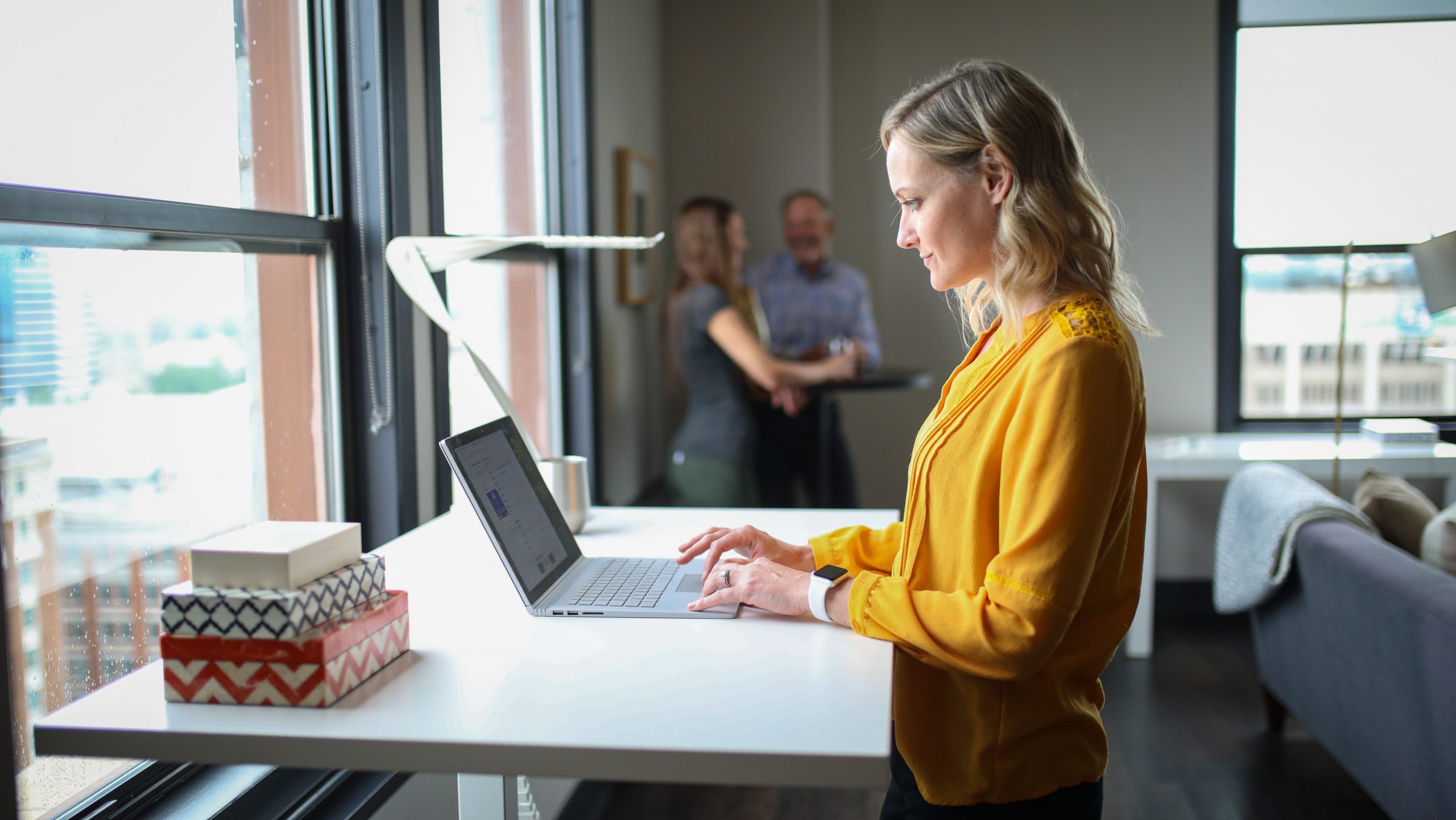
Some headaches may be avoided by limiting these common triggers. In addition, providing a dark, quiet space for employees who are struggling with headaches may prevent them from getting worse. This can allow an employee to recover quickly and be able to get back to work.
If all else fails, understand that an employee at work suffering from a migraine will not perform well. Encourage them to seek treatment and rest.
3. Have an Open Dialogue
Open communication with your employees is essential to good morale and finding solutions to any problems. When an employee can partner with their employer to come up with a plan, there can be progress. Have an open dialogue with employees about their specific headache triggers. Provide encouragement to seek treatment from a healthcare professional. Go over options for sick days and ways they can make up time they may miss due to their headaches.

Migraine sufferers are not unreliable. They have a neurological disease that needs attention and treatment. It is difficult to see the symptoms of a migraine outwardly, but with open communication, absenteeism and even presenteeism can be lessened and even avoided.
Visit The National Headache Foundation for more information and resources on Headache Awareness and the WorkMigraine program.
Hepatitis: Find The Missing Millions
Thursday, July 2nd, 2020
Every year on July 28th, we observe World Hepatitis Day. This is a day to raise awareness and connect those infected with proper care. It is estimated that nearly 300 million people are walking around infected, completely unaware. The main way to remedy this issue is to spread awareness, encourage people to get tested, and receive treatment.
Prevention
The goal is to eradicate all forms of viral hepatitis by the year 2030. While we’ve seen a decrease in diseases like tuberculosis and HIV, cases of hepatitis have continued to rise. The CDC’s main tool of prevention has been to encourage vaccination. Both hep A and B have vaccines, with hep B being most commonly spread from an infected mother to her child during birth. This is why the hep B vaccination is recommended for infants before leaving the hospital.

Hep C, D, and E do not yet have vaccines. However, hep C can be treated in 90 percent of cases. Hep D is only contracted when an individual is already infected with hep B. So vaccinating against hep B can also protect against hep D.
Types of Hepatitis
Viral hepatitis comprises types A, B, D, D, and E. These are infectious diseases that spread easily from person to person and lead to liver disease.
Hepatitis A – Hep A is rarely fatal, but does cause some serious symptoms. In the US it is spread through close personal contact with someone who is infected. Poor sanitation and hygiene can also lead to its spread worldwide.
Hepatitis B – This virus is the one most commonly spread from mother to infant at birth. This is why it is recommended that all infants receive the vaccine as soon after birth as possible. Hep B can lead to cirrhosis of the liver and liver cancer.
Hepatitis C – There is currently no vaccine for Hep C, although 90% of cases are able to be cured. This virus is usually transferred through infected blood, by the sharing of needles or improper medical treatment. The research for a vaccine is ongoing.
Hepatitis D – Hep D can only be contracted by someone already infected with Hep B. So even though there is no vaccine for it, the best way to prevent it is by being vaccinated for Hep B.
Hepatitis E – Hep E is typically contracted from contaminated drinking water, usually in areas with poor sanitation and water filtration. It is most deadly to pregnant women.
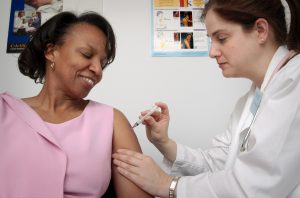
How to Get Tested
So while millions are walking around infected with hepatitis, they are unknowingly endangering themselves and others. We need to get those who are infected tested and connected to treatment. How do you get tested? A simple blood test can be performed by your doctor. This will determine what type of virus you may have as well as its severity. The doctor may also examine your liver to look for signs of inflammation.
Someone can be infected with the virus and not show any symptoms for years. So it’s important to get tested if you fall into any one of these categories:
- Baby boomers (those born between 1945 and 1964) are much more likely to be infected.
- Anyone who has had a blood transfusion or organ transplant prior to 1992
- Anyone who has ever (even once) injected illegal drugs or shared needles.
- People with tattoos.
- Anyone born to someone infected with a hepatitis virus.
Treatment Options
In general, most forms of hepatitis are either treatable or resolve on their own with rest and proper care. For acute hep C and chronic forms of both hep B and C, an antiviral medication may be prescribed. There are no medications available at this time to treat hep D or E. If extensive damage is done to a person’s liver, a liver transplant may be required.

For more in-depth information about hepatitis, its symptoms, and treatment options, please visit the links in our Wellness Observance Calendar. We have the most comprehensive Wellness Calendar available and we offer it to you as a free download for your resource!
Health Benefits of Massage
Saturday, June 27th, 2020
Each July we observe Every Body Deserves a Massage Week to promote the health benefits of Massage in our communities. Often we think of massage as merely a luxury or spa type of experience. However, we will see that given its health benefits, it’s much more than that. More than just loosening tight muscles and being relaxing overall, massage can provide some real relief from a variety of health issues.
Health Benefits of Massage
Increase in Serotonin Levels
Massage has been found to increase serotonin levels in the brain, our brain’s “happy” chemical. More serotonin production has led to a decrease in chronic pain like fibromyalgia sufferers. It’s also shown to help decrease back pain, headaches, and even arthritis. Massage has been known to lower inflammation throughout the body, alleviating many conditions stemming from inflammation.

Rising levels of serotonin can also contribute to a better night’s sleep. Those who suffer from insomnia have found massage to be a great natural alternative to the many habit-forming medications currently prescribed as sleep aids. There are no long term side effects to massage as there are with narcotics making it a much safer choice.
A Decrease in Cortisol Hormone
Cortisol, our stress hormone, is responsible for much of our body’s ailments. Massage has a relaxing effect that decreases stress. This alleviates tension headaches, lower back pain, anxiety, and even depression.
A drop in cortisol levels can also help decrease blood glucose, making it extremely beneficial to diabetics. The increased blood flow provided by massage helps promote the effectiveness of insulin in the body, providing better blood glucose levels.
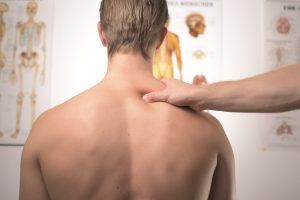
Increased circulation and decreased inflammation can also contribute to a better range of motion and flexibility. People with high blood pressure have also found frequent massage to be effective in lowering blood pressure.
Stimulation of The Lymphatic System
The lymphatic system carries fluid throughout the body. Health conditions that interrupt this flow contribute to swelling and lymph fluid build-up. Things like infections and cancer treatments can damage lymph nodes and create problems like lymphedema. Certain types of massage help to improve the lymphatic system, restoring the body’s natural processes.

As with any medical treatment, it’s best to consult with your physician about what methods might be best for you. Most of the health benefits listed here are found through regular massage treatments. Please visit our Wellness Observance Calendar for more information on Massage and to stay up to date on future health observances.
UV Safety Tips: Simple Ways to Protect Yourself from Harmful UV Rays
Tuesday, June 23rd, 2020
We all know we need to protect ourselves from the sun. UV radiation can be harmful to our skin in multiple ways. It speeds up the aging process, suppresses the immune system, can cause sunburn, and increases our risk for skin cancer. Even synthetic UV rays from tanning beds can cause harm to our skin often creating an even higher risk of skin cancer.
During the month of July, we observe UV Safety Month. Throughout the month we will spread awareness about various ways to protect ourselves from harmful UV rays. Are you providing yourself and your loved ones with full protection? We want to share a few tips to make sure you aren’t missing anything.
Seek Out the Shade

During the Sun’s most direct rays, between 10 am and 4 pm, it’s important to seek out the shade when possible. If there’s no shade available, bring your own! A broad-rimmed hat or ball cap can provide extra shelter from the sun for your face. The skin on your face is one of the most vulnerable to the sun since it is always exposed.
Remember that UV rays may still be able to reach you, even in shade. This is most likely when you are near reflective surfaces like sand, snow, or water. So wear your sunscreen even in the shade.
Understanding SPF: Sun Protection Factor

What SPF should you be looking for in your Sunscreen? What does it even mean? SPF or Sun Protection Factor indicates how long you will be protected in the Sun. If you wear an SPF of 10, your skin will take 10 times longer to burn than it would if left unprotected. However, the FDA recommends using a minimum SPF of 15 and most doctors recommend a 30 SPF minimum.
No matter what SPF you choose, experts also say you should reapply every 2 hours. More frequent reapplication may be necessary when swimming or excessively sweating.
It’s also important to note that SPF only protects against UVB rays. UVB radiation damages the skin causing sunburn. But UVA rays penetrate deep into the skin causing aging and also posing the risk of skin cancer. Choosing a sunscreen labeled, “broad spectrum” or “full-spectrum” will protect against both UVA and UVB rays.
Don’t Forget these Hidden Spots

It’s easy to remember that we need sunscreen on our shoulders, back, arms, and legs. What about those places we commonly miss? Be sure to protect your ears, the part in your hair, and the tops of your feet. Lips are another important, but easily forgotten part of the body to protect. Wear a lip balm with SPF and reapply frequently.
Harmful UV rays are partly responsible for vision-related problems like macular degeneration and cataracts. So be sure to protect your eyes with sunglasses specifically labeled with 99% UV protection.
More UV Safety Tips
For more information on UV Safety Month, visit our Wellness Observance Calendar. You can also receive a free download of our entire 2020 Calendar to stay up to date on future Wellness Observances throughout the year.
5 Reasons Why People Don’t Exercise
Monday, March 30th, 2020
This May is National Physical Fitness and Sports Month. We know that exercise is such a crucial element to good health. However, approximately 70% of people in American are overweight and out of shape. Heart disease is still our number one killer and the average American spends five hours in front of a television screen daily. This wellness observance is an excellent time to promote fitness at any level and work to lessen those numbers. Here we will address some common reasons why people may not exercise and offer some suggestions to overcome them.
Reason #1. “I have no time to exercise.”

This is perhaps the most common misconception about exercise. Many of us have very busy, hectic schedules. But the reality is that what we make time for reveals our priorities. You may think you have no time to exercise, but do you have time for all the health complications that may come from a sedentary lifestyle?
Time is relative. Each of us has twenty-four hours in a day. Take a look at your daily calendar and make a note of what you actually do to fill each hour. You may not have time to devote two hours at the gym every day. However, nearly everyone has ten to twenty minutes a day. You can take a brisk walk on your lunch break or after dinner each night.
Often times we believe that if we can’t do something the “right” way or invest in it the way we think we should, we can’t do it at all. But if we truly understood the value of consistency over time, we would realize how even small efforts make a big difference. Where our health and fitness is concerned, 20 minutes a day of exercise can make all the difference in the world.
Reason #2. “I can’t afford a gym membership or personal trainer.”
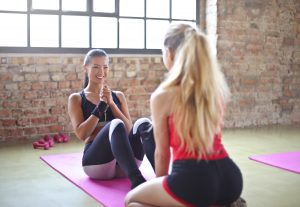
With technology being what it is today, you really don’t need a gym membership to get in shape. You may still enjoy the social, community aspect of fitness. Join a Facebook group or on-line fitness group. Accountability is great, but it doesn’t have to cost money. Even meeting up with a friend can be a great way to stay motivated and get healthy together.
There are plenty of workout videos for free on platforms like YouTube and Pinterest. Find your favorite fitness blogger to follow on Instagram for diet and exercise tips and programs. The number of resources is plenty, but that can also be overwhelming, especially to a beginner. Start small and go from there. Perhaps choose one workout plan or video to stick with first and then branch out as you progress in your fitness.
You don’t really even need technology or a gym. Just get outside and move your body! Have a private dance party in your own bedroom, play a game of basketball, go for a swim. The main idea is just to get up and move every single day. Get your heart-rate up and build muscle. Your body will thank you for it.
Reason #3. “I have bad knees/back/other health issues.”
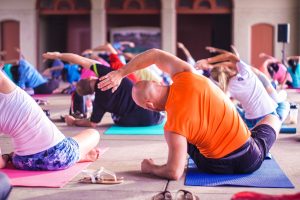
It’s certainly a legitimate concern when you have underlying health issues that make it more challenging to exercise. However, it’s only more detrimental to your health to let them stop you. Be sure to consult your doctor about what exercise may be beneficial to you. Do you have bad joints? Exercises like walking, the elliptical machine or swimming may be your best options. There are even some seated workouts available.
Don’t hesitate to modify strength training exercises to fit your needs. When you are carrying a lot of extra weight, it can be difficult to perform certain exercises. Modification is a great way to get started. Gradually, as your fitness level improves, you may not need to modify. Many of your current health issues may even disappear as your habit of exercise increases your overall health.
Reason #4. “I have too much weight to lose. It won’t make much of a difference.”
It can be overwhelming to start an exercise program when you feel you have so far to go. Set small, incremental goals for yourself. Don’t expect changes in your body overnight. Your main goal in creating a habit of exercise should be just that – creating a habit. Exercise is part of a lifestyle. Losing weight or gaining muscle can be great benefits, but they should always come secondary to your health.
Take it one day a time and celebrate what your body is capable of doing! When you exercise, it isn’t to punish yourself for eating poorly. Exercise is a way to care for your body and your health.
Maybe you’re already thin and think you don’t need exercise. Thin does not equal healthy! Your heart and lungs still need exercise. Exercise is not about weight, but about health.
Reason #5. “I just don’t like to exercise.”

Maybe you genuinely just don’t like exercise. That’s fair! But if you don’t like to do something, it is very easy to find reasons not to do it. If you don’t like an exercise, don’t do it! Find something you do like to do. Don’t like running? Don’t run. Simply walk or ride a bike. Take a dance class or take up yoga. You have plenty of options to choose from. Exercise can be fun! You just have to find the right fit for you. The more you enjoy it, the more likely you are to stick with it!
Visit our National Wellness Calendar to learn more about National Physical Fitness and Sports month.
Read our Wellness Blog on Promoting Observances in your workplace.
Managing Your Allergy Symptoms Naturally
Sunday, March 29th, 2020
Spring is in the air – and so is pollen. It’s that time of year when seasonal allergies are at an all time high. Over the counter allergy medications help, but most of us prefer a natural remedy when we can find one. Sometimes OTC medications just aren’t doing enough to relieve the severity of your symptoms. We have gathered some all natural ideas for you, but be sure to run them by your doctor to make sure they’re the best options for your specific case.

Your Body’s Response to Allergens
Your body senses allergens as a foreign, negative agent that needs attacking! It produces proteins called “histamines” to get to work and eliminate the allergens from your body. These create symptoms in your body like itchy, watery eyes, runny nose, sneezing, scratchy throat even atopic dermatitis. Even though these symptoms are uncomfortable, it’s evidence that your body is doing a good job!
What your body needs to ease these symptoms is anti-histamines and anything that reduces inflammation in the body. If we can reduce inflammation, we can reduce the severity of symptoms. There are plenty of natural agents that combat inflammation and we’ll talk about several.
Reducing Inflammation
There are so many natural aids that deal with inflammation in the body. We’re going to choose just a few to discuss here, but feel free to do your own research on other options you may have.

Vitamin C is everybody’s favorite immune booster, but with good reason! It is one of the most powerful antioxidants, which is incredibly beneficial since allergies create oxidative stress in the body. It’s also an excellent anti-inflammatory and 2 grams of vitamin C daily can act as an anti-histamine. Whether in supplement form or in your diet, make sure you’re getting plenty of Vitamin C to start.
Bromelain is another popular anti-inflammatory. It’s an enzyme found naturally in pineapple, but you can also find it in supplement form. It’s been used as a treatment post surgery, and has been found especially helpful for inflammation in the sinuses.
Probiotics are essential for good gut health and gut health boosts your immune system. But where allergies are concerned, your immune system may be in “hyper-drive” or over reacting. Taking a good probiotic (They are not all created equal. Do your research and consult your doctor.) will help bring balance back to your immune system, reducing inflammation in the body and lessening the body’s overactive immune response.
Milk Thistle & Turmeric are both great liver support. When your body is full of toxins, your liver is working hard and may struggle to eliminate allergens. This may make your allergy symptoms worse. Be kind to your liver by reducing your intake of fatty, fried foods, alcohol and sugar. Taking a supplement containing milk thistle and turmeric can be very beneficial for detoxing your liver and may lead to a decrease in your allergy symptoms.
Eliminating Allergens
We can’t very well stay locked inside all day, every day and most of us don’t want to. But there are some simple ways we can try to eliminate a few of the allergens that trigger symptoms, without lessening our quality of life.
Taking frequent showers, especially after spending extended time outdoors will help to wash away allergens that you are carrying on your body or in your hair. Vacuuming frequently and changing your pillowcase often can also help.
Change your air filter regularly. Invest in a dehumidifier to eliminate extra moisture that may be contributing to any mold or mildew growth in your home. You may also try an air purifier to help eliminate other airborne allergens and improve the overall quality of air that you breathe in your home. Many individuals have seen incredible differences in their allergies from the use of an air purifier.
Nasal irrigation by means of a nettipot or a simple saline spray have also proven very effective at relieving respiratory symptoms. They can help to flush out any allergens residing in your nose and keep things moving along.
Exercise is A Cure All
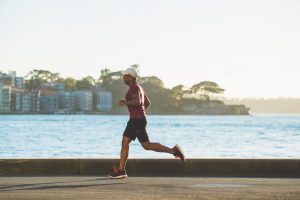
Studies have shown that exercise has a profound effect on the reduction of allergy symptoms. Although, no one really knows why. One reason may be that it’s a great stress reliever and less stress leads to less overall inflammation. Regardless, the benefits of exercise are so numerous, that you can only be better off by trying it.
Please visit our National Wellness Calendar for more information on Asthma and Allergy Awareness Month coming this May, as well as other Wellness Observances.
Promoting Bike Month in the Workplace
Saturday, March 21st, 2020
There’s a growing movement that increases health, builds community and decreases pollution – bicycling! Each May since 1956, we observe Bike month to encourage this movement to grow and spread health and wellness. In 2020, Bike to Work Week will be May 11–17, with Bike to Work Day on Friday, May 15. This is a very simple health activity that you can encourage in your workplace in a variety of ways. Healthier and more active employees are happier, more productive employees. Did you know that 40 percent of all commutes are two miles or less? That makes them the perfect length for a bike ride!

Bike Events
Planning a Bike Month Event is a great way to promote National Bike Month! The League of American Bicyclists has lots of resources for event ideas and promotional materials. Here are just a few ideas!
CAR VS. BUS VS. BIKE COMMUTER RACE –
Organize a race between cyclists and other commuters. Everyone leaves at the same time, with the same destination, but take very different routes. Surprisingly, cyclists usually win! It’s a great way to show one of the many benefits of taking a bicycle to work. Many first-time bike commuters become regular cyclists afterward.
BREAKFAST OR ENERGIZER STATIONS –
Set up stations in various neighborhoods where bicycle commuters can stop by for breakfast! You can even ask local restaurants to donate food for the event. Providing reflective bands or blinking lights and additional bike “swag” is another fun way to promote the event.
NATIONAL BIKE CHALLENGE –
Bike Week and Bike to work day are great, but signing up for the National Bike Challenge keeps it going all month. Encourage your employees to register online at www.nationalbikechallenge.org where they can track their miles, build community, and even win prizes! It’s a fun way to be competitive and incentivize bike riding.

Benefits of Bicycling
HEALTH –
80% of all cyclists say their health has improved since beginning to bicycle. With obesity on the rise, bicycling to work is a great way to get regular exercise into a busy schedule. Those who bicycle are typically leaner, fitter, have lower blood pressure and healthier cholesterol levels.
Stress levels also decrease with bicycle commutes. It can be very freeing and relaxing to go on a bike ride. Typically, cyclists are also able to avoid traffic congestion which can be a huge cause for stress for regular car commuters.
SAVE MONEY –
According to an analysis by the League of American Bicyclists, Americans saved more than $4.6 billion by bicycling instead of driving in 2012 alone. Bike commuters avoid parking ticket costs, gasoline prices, and various other car maintenance expenses. The cost of a year’s bike maintenance is a mere $300-400 as compared to an average of more than $8,000 for a car.

ENVIRONMENT/ECONOMY –
Cars are the number one contributor to environmental pollution. Short trips in the car are more harmful to the environment than longer ones. So switching to bicycles for those shorter trips cuts down on 3.6 pounds of pollutants per mile!
Besides air pollution, parking costs and space are exponentially less for bicycles. Ten bikes can fit in one parking space. The cost of parking is astronomically more for cars than bikes. Parking for 75 bikes can be constructed for the same price of 4 cars.
Studies have shown that cyclists stop by local businesses more frequently and spend more money there. Bicycle commuters also take 15% fewer sick days and are generally more productive at work.
For more resources and information on National Bike Month, Bike Week, and Bike to Work Day, visit our National Wellness Calendar.
COVID-19: What We Need to Know
Saturday, March 14th, 2020
The world has been affected by this coronavirus outbreak in a way that none of us expected a few weeks ago. With the widespread reach of the media and social networks, we have the double-edged sword of a surplus of information. It can be difficult to wade through it all and make sense of what it means. There are two extreme ends of the spectrum, oscillating between extreme panic to an almost blase attitude. There is some real cause for concern, but we’d like to help the situation by compiling some helpful facts and tips for how to handle our current situation.

Preventing the Spread of Disease
The disease has been found to spread most easily from close contact (within 6 feet) from person to person. The transfer of the virus can occur from unprotected coughing or sneezing. The CDC has been extremely clear in describing the measures we can all take to prevent the spread of this highly contagious virus.
- Wash hands frequently, especially after using the bathroom, coughing or sneezing, touching any potentially contaminated surfaces.
- Keep your unwashed hands away from your face where germs can obtain easy entry into your body.
- Stay home when you are sick.
- Keep away from people who are infected with the virus.
- Put distance between yourself and large groups of people if there is a spread in your community.
- Wear a facemask ONLY if you are sick or caring for a sick person who may be unable to wear one.
- Clean and disinfect frequently touched surfaces.

As employers, how can we keep our workplaces healthy?
- Encourage employees to stay home when sick by providing flexible sick leave policies.
- Enable as much work to be done remotely as possible during community outbreaks.
- Separate sick employees who may become sick during the workday.
- Encourage routine hand washing.
- Perform thorough routine cleaning of frequently touched surfaces.
- Educate employees on symptoms or coronavirus.
Symptoms of Coronavirus
The coronavirus is a respiratory illness exhibiting the following symptoms. Keep in mind that people may respond to the virus in different ways. These symptoms may appear up to 14 days after exposure:
- Fever
- Cough
- Shortness of breath
Most cases of the virus have been mild and recoverable. However, there are some who are at increased risk for the most severe cases, potentially becoming fatal. Those at high risk include the elderly and those with preexisting conditions such as heart disease, diabetes, and lung disease. If you or someone close to you fit into the high-risk category, take extra precautions.
If you do exhibit symptoms don’t go to the doctor. Call your doctor and describe your symptoms and possible exposure to the illness. They can advise you if you need to be tested and tell you what your next steps should be.
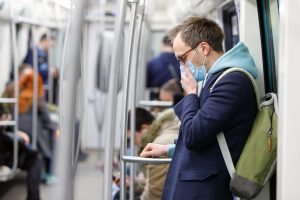
Be a Kind Human
Remember that we are all in this together. Even if you are not at a high-risk for infection, you may unknowingly be in close contact with people who are. Consider the people around you. Take all the precautions advised by the CDC to prevent or lessen a widespread outbreak in your area.
Be considerate when stocking up on supplies and only purchase what you need. Leave some for others rather than overbuying out of panic or fear.
Keeping Anxiety at Bay
In order to keep anxiety at bay, it may be best to limit your exposure to social media outlets. Protect your mental health by keeping things light, talking to your loved ones and staying focused on the positive. Even though this virus isn’t well known, much progress has been made already. The mass cancellations are for our safety and prevention and should be comforting more than inciting fear. It’s a means of stopping the spread of the virus so that it stays under control.
For much more specific information on the coronavirus and how to stay healthy, especially as businesses and employers, visit the official CDC website.

